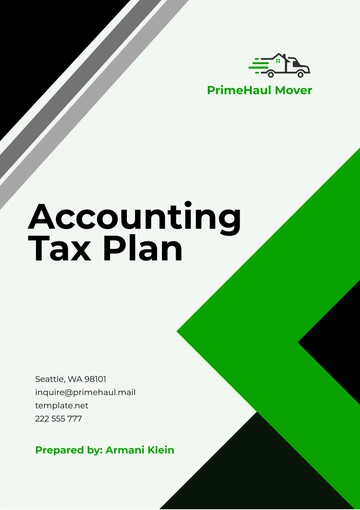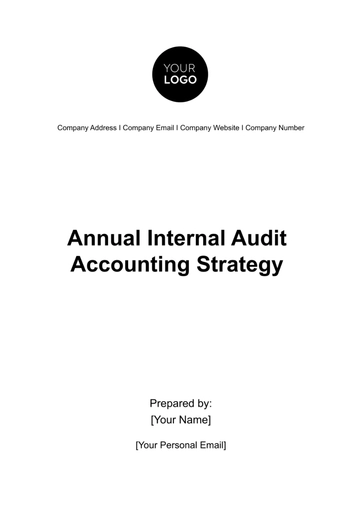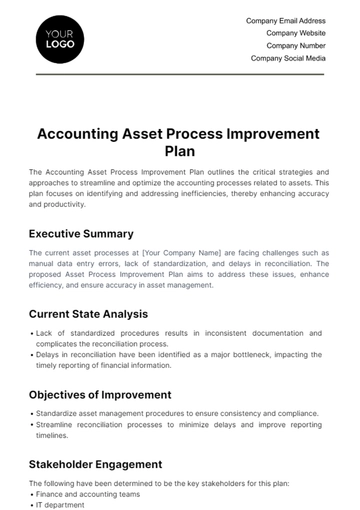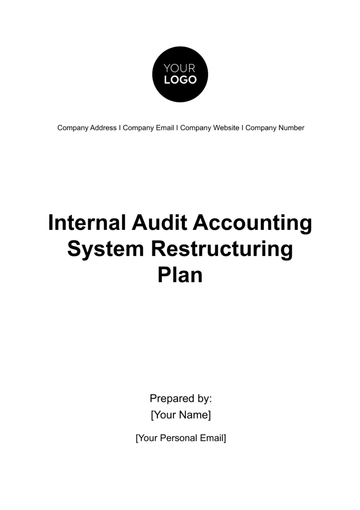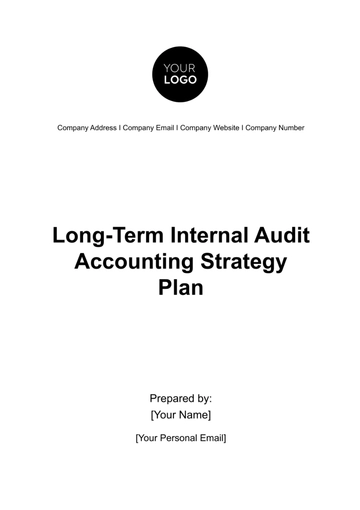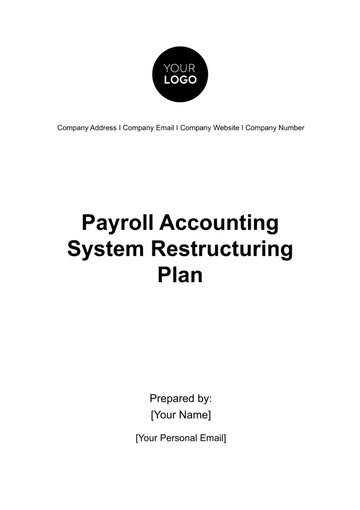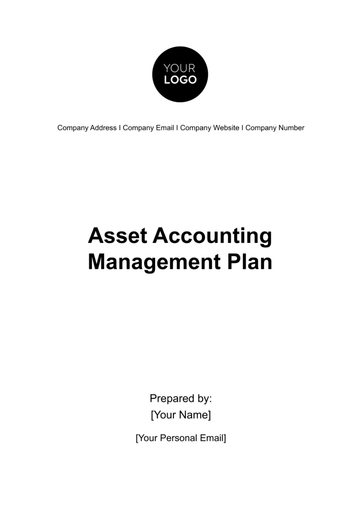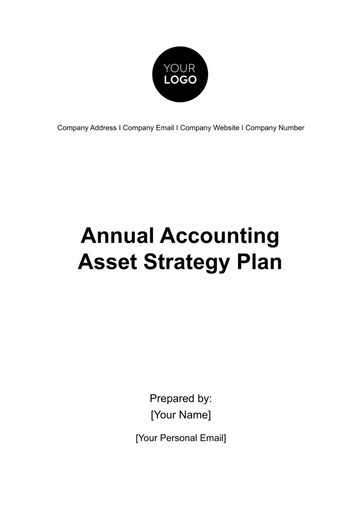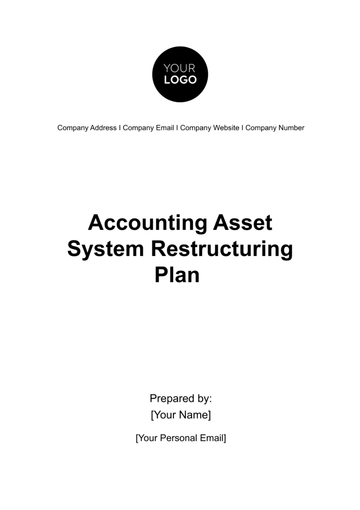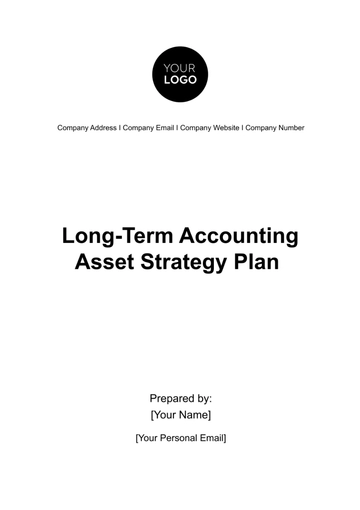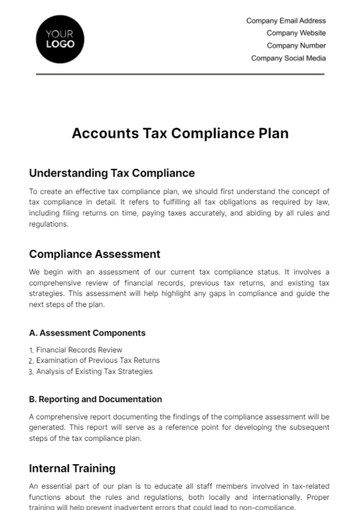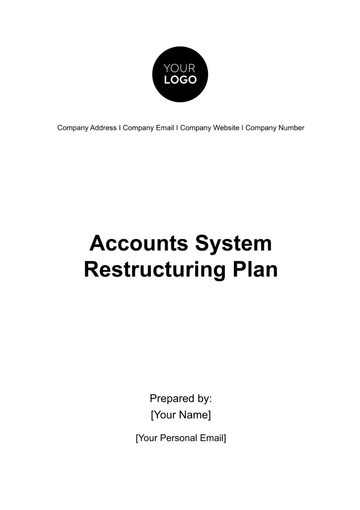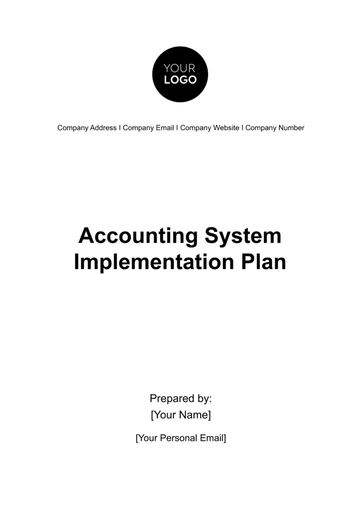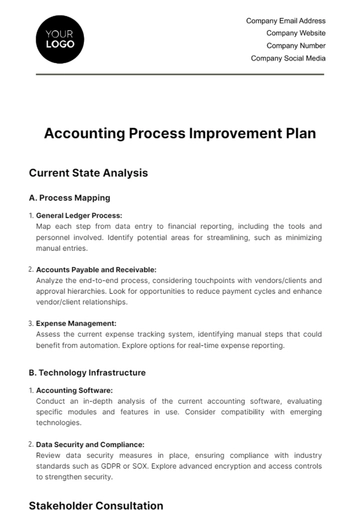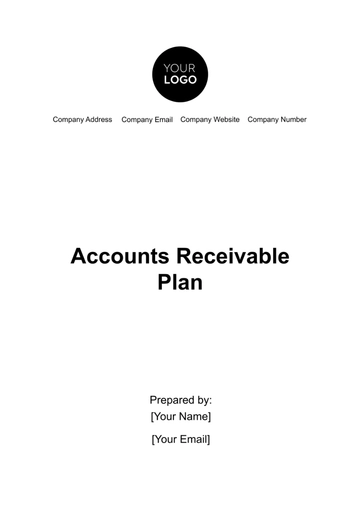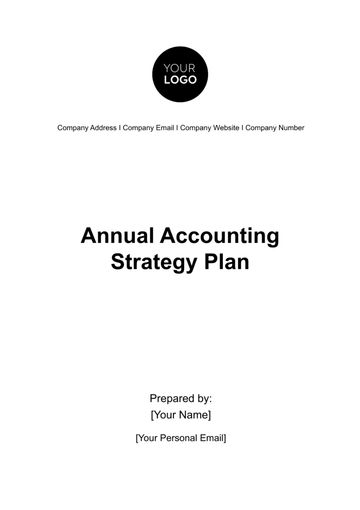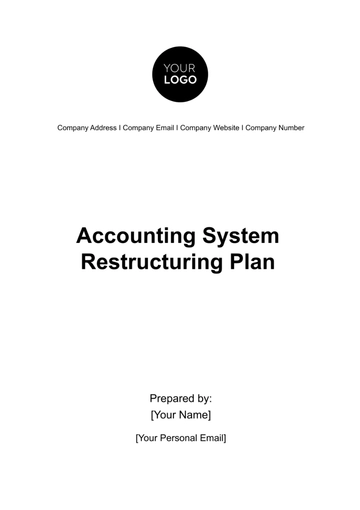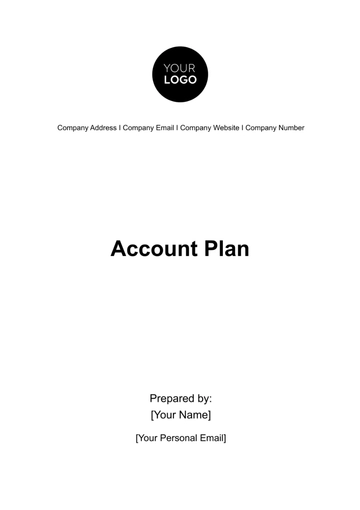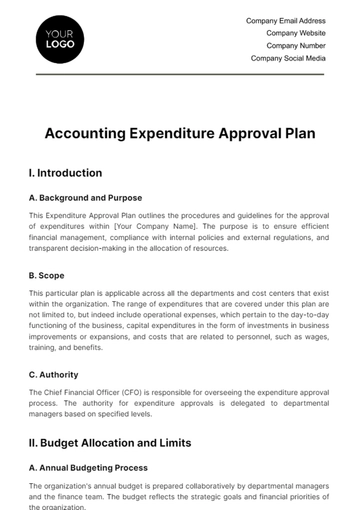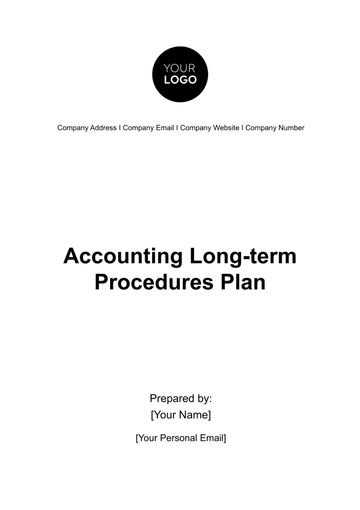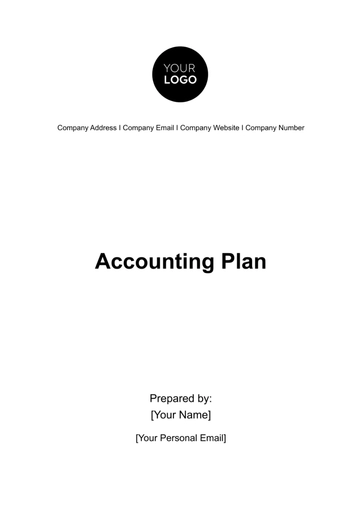Free Accounting Process Improvement Plan

Current State Analysis
A. Process Mapping
General Ledger Process:
Map each step from data entry to financial reporting, including the tools and personnel involved. Identify potential areas for streamlining, such as minimizing manual entries.
Accounts Payable and Receivable:
Analyze the end-to-end process, considering touchpoints with vendors/clients and approval hierarchies. Look for opportunities to reduce payment cycles and enhance vendor/client relationships.
Expense Management:
Assess the current expense tracking system, identifying manual steps that could benefit from automation. Explore options for real-time expense reporting.
B. Technology Infrastructure
Accounting Software:
Conduct an in-depth analysis of the current accounting software, evaluating specific modules and features in use. Consider compatibility with emerging technologies.
Data Security and Compliance:
Review data security measures in place, ensuring compliance with industry standards such as GDPR or SOX. Explore advanced encryption and access controls to strengthen security.
Stakeholder Consultation
A. Internal Teams
Finance Team:
Engage in one-on-one discussions with finance team members to gather detailed insights into their daily challenges and suggestions for process improvement. Encourage open communication.
IT Department:
Collaborate closely with the IT department to understand the technical landscape. Identify areas where IT support can enhance accounting processes, considering both current and future needs.
B. External Partners
Vendors and Clients:
Conduct surveys or interviews with key vendors and clients to gather feedback on their experiences with our accounting processes. Identify areas for collaboration and potential improvements.
Improvement Recommendations
A. Process Optimization
Automation Opportunities:
Collaborate with the IT team to identify specific tasks prone to errors or delays that can be automated. Evaluate the cost-benefit analysis of implementing automation tools.
Standard Operating Procedures (SOPs):
Work with the finance team to develop clear and standardized SOPs for critical accounting processes. Consider creating interactive guides or video tutorials for better comprehension.
B. Technology Enhancement
Software Upgrade/Integration:
Evaluate the feasibility of upgrading to the latest version of the current accounting software or explore alternative solutions. Consider a phased approach for minimal disruption.
Cybersecurity Measures:
Implement a continuous training program on cybersecurity best practices. Regularly update protocols to stay ahead of emerging threats and vulnerabilities.
Implementation Plan
A. Phased Rollout
Prioritize Changes:
Develop a detailed roadmap for implementation, prioritizing changes based on their impact and dependencies. Consider conducting pilot programs for complex changes.
Training and Change Management:
Customize training sessions based on individual roles within the finance team. Implement a change management plan that includes ongoing support and feedback channels.
B. Continuous Monitoring and Feedback
Performance Metrics:
Define specific KPIs related to efficiency, accuracy, and turnaround times. Implement tools for real-time monitoring and reporting.
Feedback Loops:
Establish regular feedback sessions, both formal and informal, with the finance team, IT department, and external partners. Encourage a culture of continuous improvement.
Reporting and Documentation
A. Progress Reports:
Develop comprehensive progress reports with visuals and comparisons against baseline metrics. Include narratives on challenges faced and how they were overcome.
B. Documentation:
Create a centralized repository for all documentation related to the improvement plan. Ensure accessibility for all team members and maintain version control for critical documents.
Conclusion
The Accounting Process Improvement Plan is a dynamic and detailed strategy aimed at creating a more efficient and resilient accounting framework at [Your Company Name]. By addressing specific pain points, leveraging technology strategically, and fostering collaboration, we anticipate significant improvements in our accounting processes.
For any inquiries or further details, please contact [Your Name] at [Your Company Email] or [Your Company Number].
- 100% Customizable, free editor
- Access 1 Million+ Templates, photo’s & graphics
- Download or share as a template
- Click and replace photos, graphics, text, backgrounds
- Resize, crop, AI write & more
- Access advanced editor
Boost your financial processes with the Accounting Process Improvement Plan Template from Template.net. This editable and customizable tool empowers you to enhance efficiency and streamline your accounting procedures. Personalize the plan effortlessly using our Ai Editor Tool, ensuring a tailored approach to process improvement. Stay ahead in financial management by optimizing your accounting workflows with this versatile and user-friendly template.
You may also like
- Finance Plan
- Construction Plan
- Sales Plan
- Development Plan
- Career Plan
- Budget Plan
- HR Plan
- Education Plan
- Transition Plan
- Work Plan
- Training Plan
- Communication Plan
- Operation Plan
- Health And Safety Plan
- Strategy Plan
- Professional Development Plan
- Advertising Plan
- Risk Management Plan
- Restaurant Plan
- School Plan
- Nursing Home Patient Care Plan
- Nursing Care Plan
- Plan Event
- Startup Plan
- Social Media Plan
- Staffing Plan
- Annual Plan
- Content Plan
- Payment Plan
- Implementation Plan
- Hotel Plan
- Workout Plan
- Accounting Plan
- Campaign Plan
- Essay Plan
- 30 60 90 Day Plan
- Research Plan
- Recruitment Plan
- 90 Day Plan
- Quarterly Plan
- Emergency Plan
- 5 Year Plan
- Gym Plan
- Personal Plan
- IT and Software Plan
- Treatment Plan
- Real Estate Plan
- Law Firm Plan
- Healthcare Plan
- Improvement Plan
- Media Plan
- 5 Year Business Plan
- Learning Plan
- Marketing Campaign Plan
- Travel Agency Plan
- Cleaning Services Plan
- Interior Design Plan
- Performance Plan
- PR Plan
- Birth Plan
- Life Plan
- SEO Plan
- Disaster Recovery Plan
- Continuity Plan
- Launch Plan
- Legal Plan
- Behavior Plan
- Performance Improvement Plan
- Salon Plan
- Security Plan
- Security Management Plan
- Employee Development Plan
- Quality Plan
- Service Improvement Plan
- Growth Plan
- Incident Response Plan
- Basketball Plan
- Emergency Action Plan
- Product Launch Plan
- Spa Plan
- Employee Training Plan
- Data Analysis Plan
- Employee Action Plan
- Territory Plan
- Audit Plan
- Classroom Plan
- Activity Plan
- Parenting Plan
- Care Plan
- Project Execution Plan
- Exercise Plan
- Internship Plan
- Software Development Plan
- Continuous Improvement Plan
- Leave Plan
- 90 Day Sales Plan
- Advertising Agency Plan
- Employee Transition Plan
- Smart Action Plan
- Workplace Safety Plan
- Behavior Change Plan
- Contingency Plan
- Continuity of Operations Plan
- Health Plan
- Quality Control Plan
- Self Plan
- Sports Development Plan
- Change Management Plan
- Ecommerce Plan
- Personal Financial Plan
- Process Improvement Plan
- 30-60-90 Day Sales Plan
- Crisis Management Plan
- Engagement Plan
- Execution Plan
- Pandemic Plan
- Quality Assurance Plan
- Service Continuity Plan
- Agile Project Plan
- Fundraising Plan
- Job Transition Plan
- Asset Maintenance Plan
- Maintenance Plan
- Software Test Plan
- Staff Training and Development Plan
- 3 Year Plan
- Brand Activation Plan
- Release Plan
- Resource Plan
- Risk Mitigation Plan
- Teacher Plan
- 30 60 90 Day Plan for New Manager
- Food Safety Plan
- Food Truck Plan
- Hiring Plan
- Quality Management Plan
- Wellness Plan
- Behavior Intervention Plan
- Bonus Plan
- Investment Plan
- Maternity Leave Plan
- Pandemic Response Plan
- Succession Planning
- Coaching Plan
- Configuration Management Plan
- Remote Work Plan
- Self Care Plan
- Teaching Plan
- 100-Day Plan
- HACCP Plan
- Student Plan
- Sustainability Plan
- 30 60 90 Day Plan for Interview
- Access Plan
- Site Specific Safety Plan
